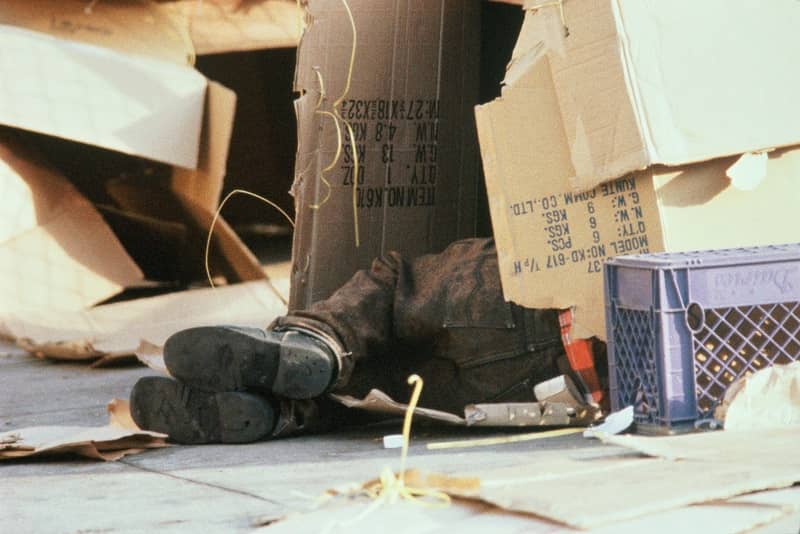

Summary
The growing number of low-income workers in Oregon’s rural counties calls attention to their diverse transportation needs. The sparse populations concentrated in these areas, combined with the types of occupations available, require flexible transportation arrangements that cannot be provided by fixed-route public transit. Private car ownership can empower these workers to reach jobs in our rural communities.
Word count: 625
Oregonians’ transportation needs are as wide-ranging as the topography of the state. Like most other western states, Oregon has dense urban centers and isolated farms, side by side. In a 2003 series, The Oregonian identified “nine Oregons.” Instead of a more simplistic rural-urban dichotomy, Oregon can be seen as nine distinct regions, each with unique economic approaches and futures. Their varied economic trajectories highlight the diverse transportation needs of Oregonians.
There are only five urban clusters in Oregon. Four are positioned on the I-5 corridor, and the fifth is located in central Oregon. Though these are the most densely occupied areas, the populations in the surrounding vicinities also have increased rapidly in the last decade.
The most phenomenal population increases in the last five years have been in counties like Josephine, Jackson, Klamath, Crook and Jefferson that are far removed from urban centers. Crook, Jefferson and Morrow counties are experiencing a population influx as many retired people are moving from California. In Jackson, Josephine and Klamath counties, construction, food industry and customer service-oriented industries have received a tremendous boost because a large number of people have relocated from other parts of the country. These industries are attracting low-income workers as never before.
The growing number of low-income workers in these isolated counties calls attention to the need for policymakers to address their particular transportation requirements. These counties do not possess dense populations, and thus establishing an intense public transit system in these areas is not a feasible solution.This is why they have very limited public transit arrangements. In addition to sparse population, the occupations typically concentrated in these areas require flexible transportation arrangements that cannot be provided by fixed-route public transit.
Does this mean that rural transportation problems are unsolvable? No. Programs exist which can truly help low-income workers overcome the critical transportation barrier in rural areas. Wisconsin-based JumpStart is one such program that helps low-income families acquire reliable and affordable cars. Since JumpStart began in 1998, it has helped 250 families in seven rural counties buy late-model vehicles.
West Central Wisconsin Community Action Agency, Inc.’s (West CAP) JumpStart program is remarkable in many ways. It helps its low-income customers purchase late-model, warranted automobiles. Its “in-house” automobile dealership license provides the best possible prices to its clients. West CAP has taken the innovative step of becoming the first and only automobile dealer exclusively for low-income clients to assure vehicle quality.
The Annie E. Casey Foundation has shown in a recent report how car ownership programs have transported families toward financial stability. Such programs help families earn, as well as grow, income by providing reliable transportation to faraway locations with better jobs.
The JumpStart program helps start car-ownership programs in other parts of the country, too, and could be successfully replicated in Oregon. A car ownership program for low-income families (Ways to Work) already operates in Portland, run by Metropolitan Family Service. However, Ways to Work only serves Multnomah, Clackamas and Washington counties. Similar programs are strongly needed in more rural and isolated counties in Oregon.
The Oregon Department of Transportation’s recent Coordinated Human Services Transportation Plan mentions that there are “…underserved populations in the rural areas, including low-income individuals who need assistance in getting into the urbanized area for jobs and other employment related services.” ODOT, therefore, has included in this plan a pilot program to explore the needs of these rural populations. The pilot program will provide a pool of funds for people with no transit options.
Policymakers’ recognition of the complicated transportation needs of low-income workers is growing. This recognition furthers public acceptance of innovative transportation-related programs like low-cost car ownership. JumpStart is doing well in assisting low-income workers in rural Wisconsin. It’s time for a similar program in Oregon’s rural counties.
Attention editors and producers:
Cascade Commentaries are provided for reprint in newspapers and other publications, with credit given to author(s) and Cascade. Contact Cascade to arrange print or broadcast interviews on this commentary topic.
Electronic text files are available online at www.cascadepolicy.org.
Please contact:
Nancy Wheaton
Cascade Policy Institute
813 SW Alder Street, Suite 450
Portland, Oregon 97205
Phone: (503) 242-0900
Fax: (503) 242-3822
www.cascadepolicy.org
info@cascadepolicy.org
Cascade Policy Institute is a tax-exempt educational organization as defined under IRS code 501(c)(3). Nothing appearing in this Cascade Commentary is to be construed as necessarily representing the views of Cascade or its donors, or as an attempt to aid or hinder the passage of any bill before any legislative body. The views expressed herein are the author’s own.
